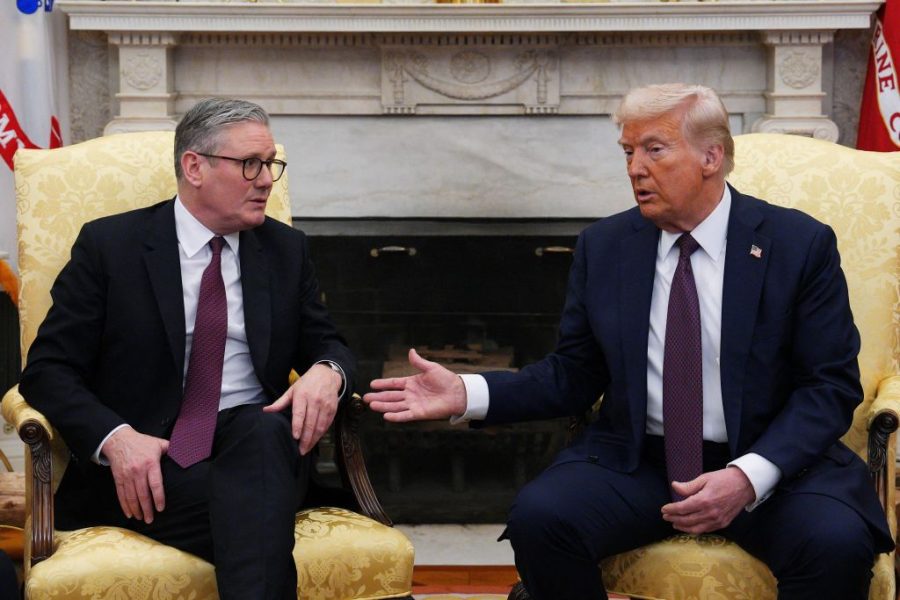When Sir Keir Starmer was elected leader of the Labour party five years ago, it must have been a feat of imagination to picture himself as prime minister. It would surely have gone beyond his strangest fever dreams to think he would be dealing more or less weekly with defence policy. That he would be making spending decisions with an eye to placating President Donald Trump probably would have caused some kind of internal short circuit.
Yet here we are. It is five weeks until Nato’s annual summit, held this year in The Hague, the first such gathering since Trump returned to the White House. The President’s last summit was in Watford in December 2019; 17 of the leaders he encountered there have since left office, though the then-prime minister of the Netherlands, Mark Rutte, is now Nato’s secretary-general.
Can the United Kingdom afford to spend the amount that Trump is demanding?
One thing has not changed: Trump thinks that his Nato allies are not spending enough on defence and are taking advantage of the United States. Any patience he may have displayed has worn out and the alliance has been warned that America no longer regards the security of continental Europe as its responsibility. ‘You got to pay your bills,’ has long been Trump’s mantra.
Perhaps it is a strange, backhanded compliment, but Trump wants the UK to increase its defence spending as an example to other Nato member states. Senior leaders in the Pentagon have told their counterparts in the Ministry of Defence that the President would be ‘happier’ if Britain’s level of expenditure reached 3 per cent of GDP by the end of the current parliament, which means the summer of 2029 at latest.
This is substantially beyond the government’s stated plans. In February, the Prime Minister announced that he would raise spending from 2.3 per cent of GDP to 2.5 per cent from April 2027, and added airily but noncommittally that the government had ‘an ambition to reach 3 per cent in the next parliament’. In effect, Washington wants Starmer to spend an extra £17 billion or so a year from 2029.
This has to be viewed from a number of perspectives. From one point of view, Trump has a valid argument, though it is unlikely he knows why. Setting aside the sheer quantum of defence spending as some international virility test, the government’s decision to move from 2.3 to 2.5 per cent is absolutely vital in order for the armed forces to be able to fulfil the commitments they have made.
At the same time, a close examination of the current state of the MoD’s finances and the credibility of its 10-year equipment plan will reveal that the additional resources the Prime Minister has promised will only fill existing gaps rather than allow any serious expansion in size or capability. A major step forward would require considerably more spending, and 3 per cent of GDP is an adequate assumption for the purposes of debate.
Trump’s desire for other Nato member states to increase spending is also reasonable. The alliance has made great play of the fact that 23 member states are now spending the agreed minimum of 2 per cent on defence. But this downplays the fact that nine member states are still failing to reach that level (though Iceland has no standing army), and that it was agreed by Nato ministers 19 years ago. Those circumstances remain inexcusable.
Can the United Kingdom afford to spend the amount that Trump is demanding? There is a proviso that the President settling on 3 per cent of GDP by 2029 is almost certainly arbitrary and cannot be assumed to be a final demand. Trump treats numbers like ancient historians treated them, as narratively indicative but not necessarily corresponding to reality. ‘3 per cent’ to the President could simply represent the idea of ‘substantially more than at present’ as well as ‘closer in proportional terms to what the US spends’ (which is currently 3.4 per cent).
When Starmer announced in February that defence spending would be increased, he raided the international development budget to find the money, and it was not without political cost (though the polite resignation of Anneliese Dodds as development minister was hardly a death-blow). The same technique cannot be used again.
In the current geopolitical climate, given the UK’s commitments and ambitions, 3 per cent of the country’s GDP is not an outlandish or extravagant amount to devote to the defence of the realm and the protection of British interests abroad. It would go some way to allowing the kind of force projection we pretend we can achieve now. It will probably have to happen soon if Britain is not to risk strategic irrelevance and profound weakness. But it would – will – require more drastic measures than semi-defunding a single discrete policy area elsewhere in government.
Solving the decades-long growth problem of the UK economy would be the best way possible to generate the extra resources. That seems unlikely in the short term, meaning instead a thorough reexamination of how the state spends public money and what its priorities are. That President Trump is urging the government to spend more should neither endorse nor invalidate the idea; but there is no sign of an appetite for the hard choices and other disappointments which would be required. If, however, there is an acceptance that we may well have to increase spending at some point anyway, there is a case for starting now.








Comments